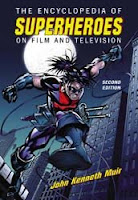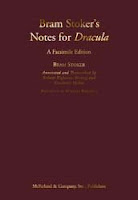Here's what's on tap from McFarland this month. This is another group of books that reveals the depth and versatility of McFarland's catalog. You've got everything here from Westerns and horror (including "revenge of nature" flicks!), to special effects and my revised and updated text on Superheroes.
Throughout the course of film history, artists have used matte painting, stop-motion animation, model photography, process cinematography, in-camera effects, travelling mattes, optical printing, physical and floor effects to entertain audiences. These are the special effects artists in this book.The biographical entries provide career synopses and movie credits, spanning the early years of cinematography through the end of the mechanical age of filmmaking, marked by Steven Spielberg’s Jurassic Park and its combination of conventional effects and computer-generated images. An extensive filmography is then presented. The book contains numerous stills, a glossary, bibliography and index.
 The Psychology of the Western
The Psychology of the Western
Western films are often considered sprawling reflections of the American spirit. This book analyzes the archetypes, themes, and figures within the mythology of the western frontier. Western themes are interpreted as expressions of cultural needs that perform specific psychological functions for the audience. Chapters are devoted to the frontier hero character, the roles of women and Native Americans, and the work of the genre’s most prolific directors, Anthony Mann and John Ford. The book includes a filmography and movie stills.
 The Encyclopedia of Superheroes on Film and Television, 2d ed.
The Encyclopedia of Superheroes on Film and Television, 2d ed.
It’s a bird! It’s a plane! It’s a complete guide to over 50 years of superheroes on screen! This expanded and updated edition of the 2004 award-winning encyclopedia covers important developments in the popular genre; adds new shows such as Heroes and Zoom; includes the latest films featuring icons like Superman, Spiderman and Batman; and covers even more types of superheroes.
Each entry includes a detailed history, cast and credits, episode and film descriptions, critical commentaries, and data on arch-villains, gadgets, comic-book origins and super powers, while placing each production into its historical context. Appendices list common superhero conventions and clichés; incarnations; memorable ad lines; and the best, worst, and most influential productions from 1951 to 2008.
 Creature Features
Creature Features
This work offers a critical, colorful and informative examination of different types of monster movies, spanning the silent period to today. Chapter One focuses on dragons, dinosaurs, and other scaly giants from films like 1953’s The Beast from 20,000 Fathoms, an impressive stop-motion production that ushered in a new era of atomic-spawned monster films. Chapter Two examines “big bug” flicks, beginning with 1954’s giant ant–infested Them. Chapter Three focuses on ordinary animals grown to improbable proportions through scientific or sinister experimentation, such as the huge octopus in 1955’s It Came from Beneath the Sea. Chapters Four, Five, and Six look at films in which nature goes berserk, and otherwise innocuous animals flock, swarm, hop or run about on a menacingly massive scale, including 1963’s The Birds and 1972’s Frogs. Finally, Chapter Seven focuses on films featuring beasts that defy easy definition, such as 1958’s The Blob and Fiend Without a Face.
 Bram Stoker’s Notes for Dracula
Bram Stoker’s Notes for Dracula
Bram Stoker’s initial notes and outlines for his landmark horror novel Dracula were auctioned at Sotheby’s in London in 1913 and eventually made their way to the Rosenbach Museum and Library in Philadelphia, where they are housed today. Until now, few of the 124 pages have been transcribed or analyzed.
This comprehensive work reproduces the handwritten notes both in facsimile and in annotated transcription. It also includes Stoker’s typewritten research notes and thoroughly analyzes all of the materials, which range from Stoker’s thoughts on the novel’s characters and settings to a nine-page calendar of events that includes most of the now-familiar story. The coauthors draw on their extensive knowledge of Dracula and vampires to guide readers through the construction of the novel, and the changes that were made to its structure, plot, setting and characters. Nine appendices provide insight into Stoker’s personal life, his other works and his early literary influences.





No comments:
Post a Comment